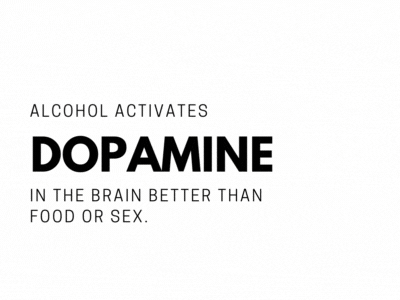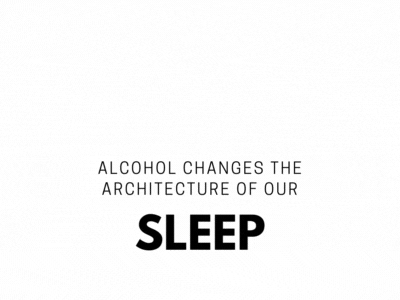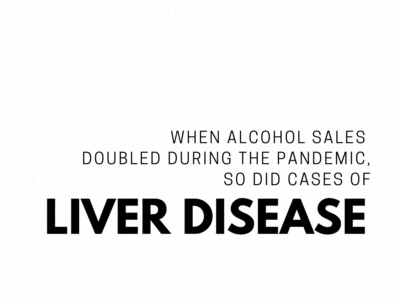Written by Jacquie Moore, BA’97
There are myriad scapegoats for our preoccupation with Happy Hour, from Robert Mondavi, whose innovation and marketing ushered in the California wine boom, to 60 Minutes’ Morley Safer, whose 1991 exploration of “the French paradox” convinced North Americans to drink more.
Over the past decade, the proliferation of craft beer; vodka and gin cans; and an elevated, Mad Men-inspired cocktail culture has added to alcohol’s appeal. Certainly, it hasn’t hurt that drinking the stuff at a regular pace had, until this past fall, been sanctioned by Health Canada: its 2011 guidelines, developed by the Canadian Centre on Substance Use and Addiction, defined low-risk alcohol consumption as 10 standard drinks per week for women and 15 for men.
No wonder the Centre’s new, significantly less-generous new guidelines have thrown many of us for a loop. It is now recommended to consume no more than two drinks weekly to minimize alcohol-related health harms — for men, that’s a case of beer less per week than was previously deemed relatively safe.
The updated guidelines reflect a substantial and growing body of research that proves that excessive alcohol consumption is a component cause of dozens of disease and injury conditions including cancer, liver cirrhosis and other concerning health problems relating to our brains, hearts and sleep cycles.
While changing our drinking habits isn’t easy, knowing why it matters can make your next mocktail a little more pleasant to swallow.
This is Your Brain on Booze
Physiologically, we know that alcohol acts on the brain — that’s why we use it. Alcohol enhances an anxiety-lowering chemical in the brain called GABA (gamma-aminobutyric acid) and enhances dopamine release, which is important for the experience of pleasure and reward, explains Dr. David Crockford, MD, a psychiatric consultant and clinical professor and researcher at the Cumming School of Medicine. All substances that people are prone to developing a problem with activate dopamine in the brain better than natural things like food or sex. And that, Crockford says, “is the story of addiction.”

In a nutshell, alcohol sets off a chemical reaction in the brain that replaces natural reward systems; our brain eventually down-regulates that reward response and it takes more and more alcohol to achieve the euphoric effect. “With alcohol, the brain says, ‘Oh, we have this external source of something exciting, so we better respond to that!’” says Crockford, who would normally have a couple of drinks with friends on weekends, and one or two more per week if he’s on vacation.
“If people stop using addictive substance such as cocaine, cannabis or alcohol — they can begin to feel disinterested in life and have to keep using it just to feel normal.” (Crockford points to playwright Tennessee Williams’ description of pursuing “the click” when a peaceful state of mind is achieved by his alcohol-dependent character in Cat on a Hot Tin Roof.)
So, what would happen to the brain if we just kept upping our alcohol intake to hit “the click”? “If you kept having more and more alcohol, you’d eventually see brain atrophy starting to occur, which, on an MRI, can look very much like Alzheimer’s,” says Crockford.
Sleep it Off? (Not so Much)
A circa-1930s advertisement for the malted-milk beverage Ovaltine promised, “the world’s best nightcap to ensure sound, natural sleep.” While its health benefits are disputable, Ovaltine does trump whiskey as a nightcap at least in terms of not messing with your sleep cycle. Indeed, alcohol can make us drowsy at any time of the day, but a cocktail before bed is almost guaranteed to disrupt sleep and suppress REM (the part of sleep that promotes dreaming and other important brain functions).

Dr. Sachin Pendharkar, MSc’11, MD, is a specialist in sleep disorders medicine and an associate professor at the Cumming School of Medicine. He says any amount of alcohol before bed can shift the way that sleep stages are organized throughout the night. “The problem is that alcohol changes the architecture of our sleep,” says Pendharkar.
Even one drink close to bedtime can change our circadian rhythm, making for a restless night and a rough morning, he says: “Alcohol acts as a sedative so we might fall asleep easily, but we pay for it later in the night.” Even one drink imbibed with an hour or two of bedtime can rob us of the right depth and stages of sleep, Pendharkar says. Poor-quality sleep can aggravate sleep apnea, anxiety, depression, and myriad other mental and physical health concerns.
Cancer, Cocktails, ComPARe
In a recent presentation to the Canadian Cancer Society (CCS), Dr. Christine Friedenreich, PhD, outlined statistics from the most comprehensive study to date on preventable cancers in Canada (the ComPARe study). As requested by CCS, which is taking on new prevention messaging, Friedenreich’s focus was on alcohol, which has been identified as one of 20-plus modifiable cancer-risk factors.
Depending on your point of view, the stats behind alcohol-related cancers are at once devastating and hope-inspiring: yes, Canadians are advised to dramatically cut alcohol consumption but, on the upside, nearly 45,000 cases of cancer could be prevented by rethinking our drinking.

Friedenreich knows change won’t come easily. “Alcohol use is so ingrained in our society and few people completely abstain,” she says. “In comparison, the negative perception of smoking is quite cut-and-dried — the majority of Canadians wouldn’t consider smoking in any amount.” Alcohol, on the other hand, offers widely acceptable social pleasures and was, for decades, mistakenly presented as helping with cardio health. To that end, an example of new messaging from the Canadian Centre on Substance Use and Addiction acknowledges that evolving science means, “we need to tell you something different than we have in the past.”
“We’ve known for many years that alcohol is a Group 1 carcinogen, and increases the risk of cancers including breast, colon, pancreatic and liver,” says Friedenreich. “The problem with alcohol and cancer is that there is no safe level.”
Liver Longer
“Everything changed after the pandemic.” Indeed, for better or for worse, myriad aspects of our lives were altered by the COVID-19 pandemic; here, Dr. Abdel Aziz Shaheen, MD, is referring to his discovery of a dramatic rise in alcohol-related liver disease during COVID’s peak.
According to a study led by Shaheen, who is a gastroenterologist and associate professor at the Cumming School of Medicine the increased hospitalizations coincided with an increase in liquor sales between March and September 2020. “When alcohol sales doubled during the pandemic, so did the cases of liver disease we saw in this province,” he says.

Alberta wasn’t alone: Shaheen says that, as similar data came in from around the world, it became apparent that alcohol consumption and subsequent liver disease was on the rise. Making matters more dire, it’s a health concern that, says Shaheen, manifests as a “silent problem.” There are no early signs of liver failure from drinking too much.
Galvanized to do something to raise more awareness of the health consequences of drinking beyond the recommended amount, Shaheen created and led a coalition between primary-care practitioners, hepatologists and Alberta Health Services to build a clinical-care pathway for alcohol-related liver disease.
“The idea is that, when a primary-care physician in the Calgary Health Zone sees a patient, they would give them some awareness of the appropriate alcohol consumption,” he says. “If the patient exceeds the limit, we can start doing the lab work or an ultrasound.” Calgary, he adds, “already leads the country in terms of creating this kind of network.”
It’s a slow road, but Shaheen is optimistic that — as with the success of anti-smoking campaigns — awareness is key to making a sea change in how our culture perceives alcohol and health.




